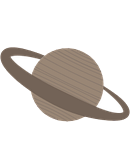Planetary Clocks
Solar System Clocks in Real-Time
Welcome to the official Solar System Planetary Clocks. These clocks display the current date and time on each planet in the solar system, scaled according to the unique rotational periods and orbit of each planet.

Mercury
12:24:16
Day 1 of 2, Year 2203

Venus
02:28:15
Day 1 of 1, Year 2060

Earth (UTC)
02:52:35
Day 351 of 366, Year 2025

Mars
14:30:48
Day 513 of 670, Year 1999

Jupiter
18:30:24
Day 7525 of 10476, Year 1974

Saturn
01:17:20
Day 21800 of 24235, Year 1971

Uranus
17:46:39
Day 28467 of 42737, Year 1970

Neptune
16:26:51
Day 30461 of 89707, Year 1970
How it Works
The clocks update in real time with each second scaled to match the rotational periods of each planet. The dates and times are based on Coordinated Universal Time (UTC), using January 1, 1970, as the reference point (Unix epoch). The date and time shown represent the offset since this epoch, adjusted by the length of a day on each planet. Explore the passage of time across the solar system, from the rapid rotations of Jupiter and Saturn to the slow days on Mercury and Venus.
What's Going on With the Years?
You may notice that some planets, like Mercury, are showing years far into the future, while others, like Neptune, appear to be stuck in the past. Meanwhile, planets like Uranus only have a handful of days per year. This is due to the vast differences in the time it takes each planet to orbit the Sun. After all, one year is equal to one journey around the Sun.
Rotation Period (Day Length)
Each planet spins on its axis at a different rate. This is what determines the length of a "day" on the planet.
Mercury has a day length of about 58 Earth days, which means time moves more slowly relative to Earth. As a result, its clock runs slower because each second on Mercury is stretched out over a much longer period compared to Earth.
Uranus spins faster than Earth, with a day lasting only about 17 hours. However, its orbital period is much longer, taking about 84 Earth years to complete a single orbit around the Sun. This means Uranus experiences many days within its long year.
Orbital Period (Year Length)
A planet’s "year" is the time it takes to complete one full orbit around the Sun. Planets farther from the Sun have much longer orbits
Mercury, being closest to the Sun, completes an orbit in just 88 Earth days, meaning its years pass extremely quickly compared to Earth.
Neptune, on the other hand, takes about 165 Earth years to complete one orbit. This is why Neptune’s clock is still showing 1970—it hasn't even completed a fraction of its first "year" since we started counting from 1970.
What Makes These Solar System Planetary Clocks the Official Ones?
These Planetary Clocks became the official clocks for the Solar System when I put the word "official" in front of their names. My game; my rules.